+ Open data
Open data
- Basic information
Basic information
| Entry | Database: PDB / ID: 2mey | ||||||
|---|---|---|---|---|---|---|---|
| Title | RDC refined solution structure of Blo t 5. | ||||||
 Components Components | Mite allergen Blo t 5 | ||||||
 Keywords Keywords | ALLERGEN | ||||||
| Function / homology |  Function and homology information Function and homology information | ||||||
| Biological species |  Blomia tropicalis (arthropod) Blomia tropicalis (arthropod) | ||||||
| Method | SOLUTION NMR / simulated annealing | ||||||
| Model details | lowest energy, model1 | ||||||
 Authors Authors | Naik, M.T. / Huang, T. | ||||||
 Citation Citation |  Journal: To be Published Journal: To be PublishedTitle: NMR structure note: Blo t 5 from Blomia Tropicalis Authors: Naik, M.T. / Naik, N. / Huang, T. #1: Journal: J.Biomol.Nmr / Year: 2007 Title: Complete 1H, 13C and 15N resonance assignments of Blo t 5, a major mite allergen from Blomia tropicalis. Authors: Naik, M.T. / Chang, C.F. / Kuo, I.C. / Yu, T. / Fang, P.J. / Chua, K.Y. / Huang, T.H. | ||||||
| History |
|
- Structure visualization
Structure visualization
| Structure viewer | Molecule:  Molmil Molmil Jmol/JSmol Jmol/JSmol |
|---|
- Downloads & links
Downloads & links
- Download
Download
| PDBx/mmCIF format |  2mey.cif.gz 2mey.cif.gz | 760.5 KB | Display |  PDBx/mmCIF format PDBx/mmCIF format |
|---|---|---|---|---|
| PDB format |  pdb2mey.ent.gz pdb2mey.ent.gz | 639.6 KB | Display |  PDB format PDB format |
| PDBx/mmJSON format |  2mey.json.gz 2mey.json.gz | Tree view |  PDBx/mmJSON format PDBx/mmJSON format | |
| Others |  Other downloads Other downloads |
-Validation report
| Summary document |  2mey_validation.pdf.gz 2mey_validation.pdf.gz | 536.3 KB | Display |  wwPDB validaton report wwPDB validaton report |
|---|---|---|---|---|
| Full document |  2mey_full_validation.pdf.gz 2mey_full_validation.pdf.gz | 866 KB | Display | |
| Data in XML |  2mey_validation.xml.gz 2mey_validation.xml.gz | 61.1 KB | Display | |
| Data in CIF |  2mey_validation.cif.gz 2mey_validation.cif.gz | 84.6 KB | Display | |
| Arichive directory |  https://data.pdbj.org/pub/pdb/validation_reports/me/2mey https://data.pdbj.org/pub/pdb/validation_reports/me/2mey ftp://data.pdbj.org/pub/pdb/validation_reports/me/2mey ftp://data.pdbj.org/pub/pdb/validation_reports/me/2mey | HTTPS FTP |
-Related structure data
| Related structure data | |
|---|---|
| Similar structure data | |
| Other databases |
- Links
Links
- Assembly
Assembly
| Deposited unit | 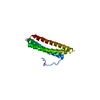
| |||||||||
|---|---|---|---|---|---|---|---|---|---|---|
| 1 |
| |||||||||
| NMR ensembles |
|
- Components
Components
| #1: Protein | Mass: 14058.818 Da / Num. of mol.: 1 / Fragment: UNP RESIDUES 18-134 Source method: isolated from a genetically manipulated source Source: (gene. exp.)  Blomia tropicalis (arthropod) / Gene: BLOT5 / Production host: Blomia tropicalis (arthropod) / Gene: BLOT5 / Production host:  |
|---|
-Experimental details
-Experiment
| Experiment | Method: SOLUTION NMR Details: This structure uses all restraints used to calculate entry 2JMH. In addition extensive new RDC data was used and final structure ensemble underwent explicit water refinement. Still 2JMH is ...Details: This structure uses all restraints used to calculate entry 2JMH. In addition extensive new RDC data was used and final structure ensemble underwent explicit water refinement. Still 2JMH is now an old and widely cited structure and may *not be replaced. The main purpose of this new entry is to validate the accuracy of 2JMH. (Mueller et al. JBC (2010) 285, 25394). | ||||||||||||||||||||||||||||
|---|---|---|---|---|---|---|---|---|---|---|---|---|---|---|---|---|---|---|---|---|---|---|---|---|---|---|---|---|---|
| NMR experiment |
|
- Sample preparation
Sample preparation
| Details |
| |||||||||||||||||||||||||||||||||||||||||||||||||||||||||||||||||||||||||||||||||||||||||||||||||||||||||||||||||||||||||||||||||||||||||||||||||||||||||||||||||||||||||
|---|---|---|---|---|---|---|---|---|---|---|---|---|---|---|---|---|---|---|---|---|---|---|---|---|---|---|---|---|---|---|---|---|---|---|---|---|---|---|---|---|---|---|---|---|---|---|---|---|---|---|---|---|---|---|---|---|---|---|---|---|---|---|---|---|---|---|---|---|---|---|---|---|---|---|---|---|---|---|---|---|---|---|---|---|---|---|---|---|---|---|---|---|---|---|---|---|---|---|---|---|---|---|---|---|---|---|---|---|---|---|---|---|---|---|---|---|---|---|---|---|---|---|---|---|---|---|---|---|---|---|---|---|---|---|---|---|---|---|---|---|---|---|---|---|---|---|---|---|---|---|---|---|---|---|---|---|---|---|---|---|---|---|---|---|---|---|---|---|---|---|
| Sample |
|
 Movie
Movie Controller
Controller



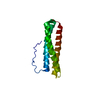
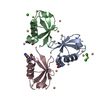
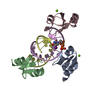


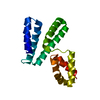


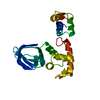
 PDBj
PDBj HSQC
HSQC